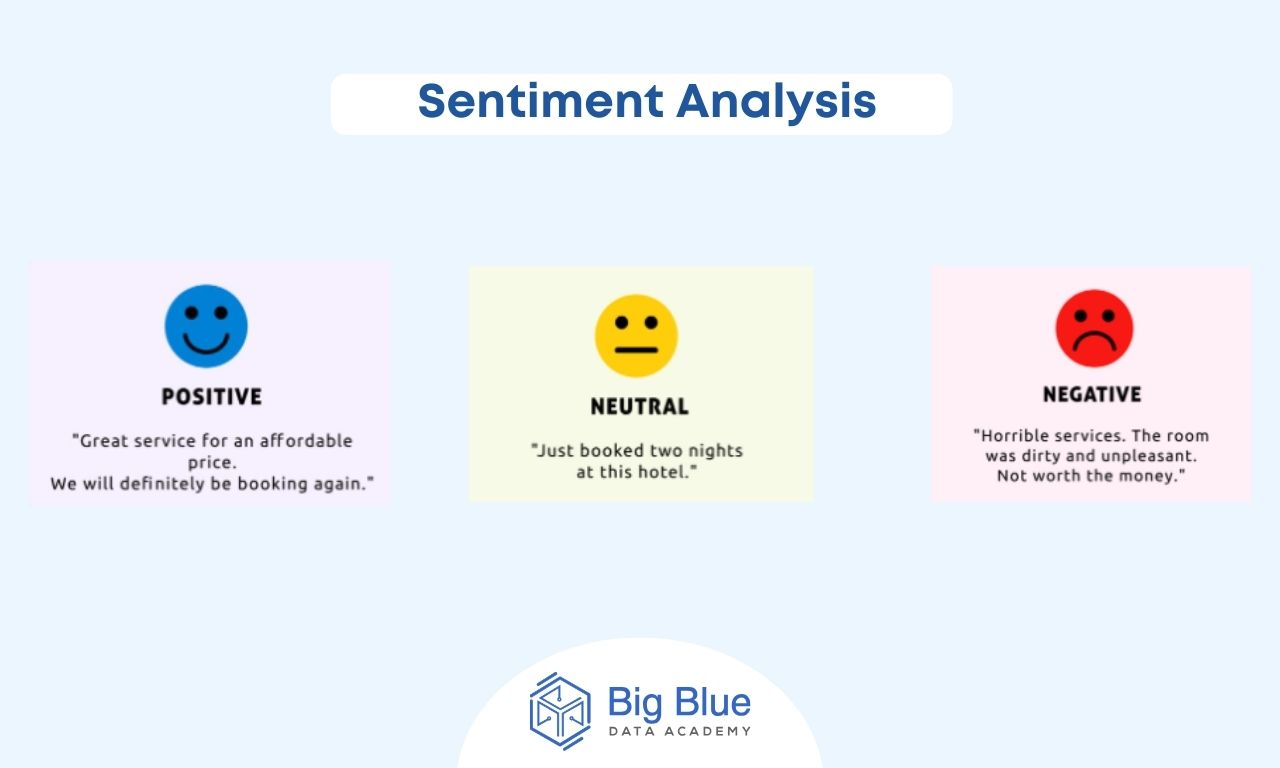Sentiment Analysis: Definition and Importance
Businesses across all sectors, in order to better understand their customers, employ various methods to measure their brand's reputation and optimize their products or services.
One method used in the field of natural language processing (NLP) is sentiment analysis.
So, in today's guide, we'll explore:
What is sentiment analysis?
How does sentiment analysis work?
Where is it used?
What are the advantages and challenges in sentiment analysis?
Let's start with a basic definition.
What Is Sentiment Analysis and Why Is It Important
Sentiment analysis, often referred to as opinion mining, is a method in the realm of Natural Language Processing (NLP) for identifying the emotional tone conveyed in a digital text.
Through sentiment analysis, one can determine whether the emotional tone of a given message is positive, negative, or even neutral.

The sentiment analysis process involves data mining, machine learning, and artificial intelligence.
In today's era where companies are required to analyze large volumes of text data daily, such as social media comments, reviews, emails, and customer support transcripts, the need for sentiment analysis adoption is particularly significant.
It is often used by businesses in the marketing sector to identify sentiments on social media, gain a better understanding of consumers, and boost their brand's reputation.
By using this method, companies can make informed decisions, enhance customer loyalty, and respond promptly to critical situations, ultimately saving valuable time, money, and labor hours.
Moving on, let's see how sentiment analysis works.
How Sentiment Analysis Works
Sentiment analysis generally follows these steps:
Initially, data collection takes place, often employing a web scraping bot or an application programming interface (API) for data extraction during text analysis.
Subsequently, data cleaning and processing occur, involving the removal of irrelevant portions of the text that do not contribute to the sentiment, such as articles, special characters, and punctuation marks.
This process is commonly known as standardization.
Following this, feature extraction is performed, where a machine learning algorithm automatically extracts text features to identify positive or negative sentiments.
In the next step, data scientists select a machine learning model.
A sentiment analysis tool rates the given digital text using a machine learning model, which can be rule-based, automated, or hybrid.
Several popular sentiment analysis tools include:
- Lexalytics
- Critical Mention
- Brandwatch
- MonkeyLearn
- Talkwalker Quick Search
Finally, sentiment classification is carried out.
After choosing a model and using it to analyze a text, a sentiment score is assigned to the text.
Apart from determining sentiment, sentiment analysis can also extract polarity, measuring the degree of positivity or negativity in the author's text.
This specific method is used to analyze various sections of text, ranging from an entire document to a single paragraph or sentence.
Now that we've discussed how sentiment analysis works, let's explore its applications.
Where Is Sentiment Analysis Used?
Some use cases of sentiment analysis include:
.jpg)
Customer Service
Sentiment analysis is utilized in customer service to evaluate real-time customer sentiment.
It aims to personalize responses based on the current conversation, thus prioritizing and addressing customer issues more effectively, particularly those expressing negative sentiments.
By understanding customer emotions, companies can make better and more data-driven decisions to improve their products or services.
Market Research
Sentiment analysis is often used by businesses to gather information about market trends and consumer preferences.
Through the analysis of data on social media, forums, and other platforms, they can adjust their strategies to respond more promptly and effectively to market developments and demands.
Simultaneously, they can monitor their brand presence to further strengthen it.
Healthcare
Sentiment analysis can also be used to evaluate comments and experiences of patients with various healthcare services.
In this way, healthcare providers can improve patient satisfaction and the quality of healthcare.
However, despite the advantages and potential of sentiment analysis, there are certain challenges that data scientists often face.
The Main Limitations of Sentiment Analysis
Despite emerging developments in Natural Language Processing (NLP), a complete understanding of every aspect of human language still presents challenges for machines.
For instance, it's relatively easy for machines to misinterpret ambiguous sentiments, as people frequently express conflicting statements.
There is also difficulty in detecting sarcasm and the complexity within a sentence, especially when a sentence contains multiple emotions.
For example, in a product review that says:
"I am satisfied with the build quality and durability of the product, but I wasn't impressed with its color,"
It's challenging for software to interpret the underlying sentiment.
Therefore, despite significant progress, there is still a long way to go for machines to be fully effective and flawless in the sentiment analysis process through training and continuous testing.
Ramping Up
So, we've seen what sentiment analysis is, its advantages and limitations, and some of its primary applications.
The field of data science offers many career opportunities and job positions with very competitive compensation.
If you are intrigued and want to learn more about data science related topics, follow us for more educational articles!


.jpg)